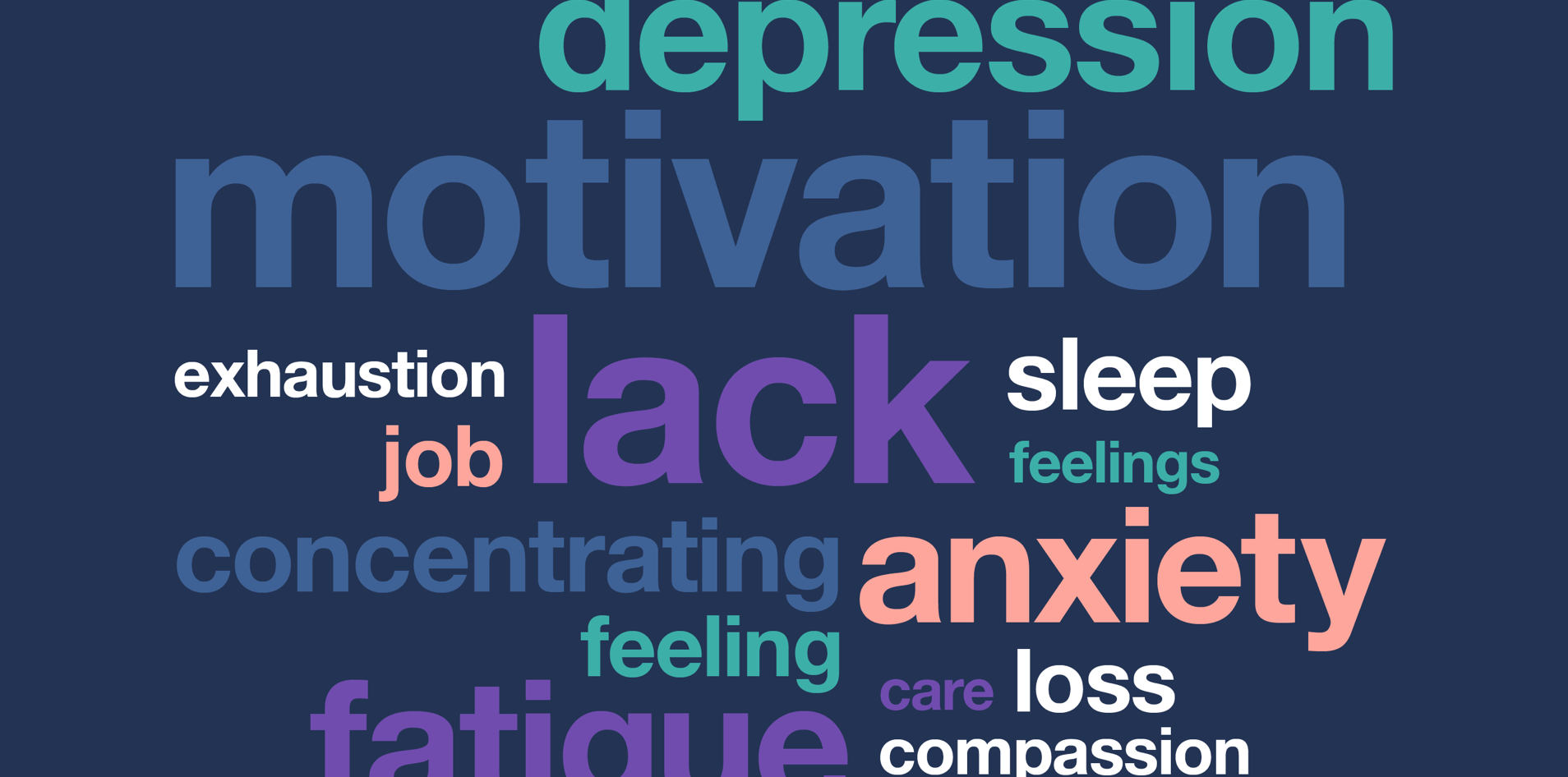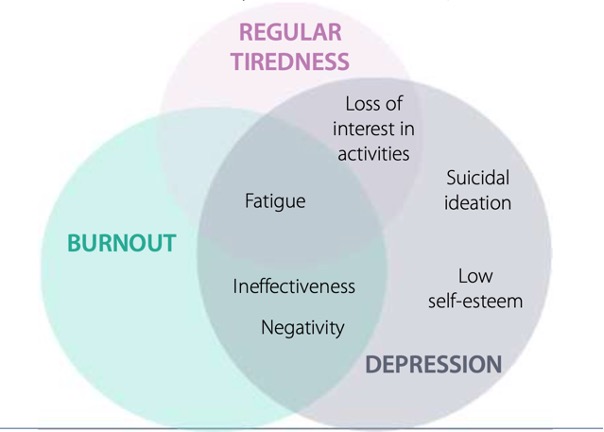One of the things that we’re passionate about is helping busy people maintain their health and wellbeing while continuing to do all the things they love. And while we certainly believe that we can sometimes do (and take on) too much, we also like to see what’s possible by pushing ourselves to break new ground. But the flip side to the mindset of always striving to be better, to grow, to do more or to take the next step, is that we can sometimes end up burning the candle at both ends, getting run down, or we may start to drop a few of those many balls that we have been juggling.
We’re often talking to people about the best ways you can support yourself when you’ve got all those balls to juggle, but before we take you through some of our tips, let’s have a look at what Burnout is.
What is Burnout?
Burnout has been recognised by the WHO as an ‘occupational syndrome’ that results in a state of mental and/or physical exhaustion caused by excessive and prolonged stress. It tends to be seen as a ‘lack’ condition, where people describe a lack of energy, a lack of motivation, a lack of sleep, they are lacking concentration…
When we look at the psychological symptoms associated with burnout, we tend to see a similar pattern with motivation, energy, sleep, mood and anxiety all being identified as problems for burnt out individuals.

And while people with burn out may describe feelings of depression, or clusters of symptoms that look like depression, burn out and depression are actually quite different. This is an important distinction because the way we treat and manage these are very different. That’s not to say there isn’t any overlap, because there very much is, but we need to identify which is in the driver’s seat so we can treat that first.

It’s estimated that Burnout and workplace stress is costing the Australian Economy around $14.81 Billion per year. These figures were from 2008 and so we think it would be a pretty safe bet to say this figure is even higher now.
Data from 2022 showed that 7 out of 10 professionals are suffering from exhaustion and burnout post covid and 30% of adults are making errors at work due to fatigue and sleep issues.
The path to burnout
Burnout generally will occur in 3 stages. And as you think back over times in your life, you may identify with some of these, or you may recognise it in your team or family members.
- Stage 1 – Stress arousal
- Stage 2 – Energy conservation
- Stage 3 – Exhaustion
Stage 1: Stress Arousal
This usually occurs after someone has been under the pump for a prolonged period of time. An individual will be in stage 1 of burn out if they experience 2 of the following symptoms – after a prolonged period of stress.
- Persistent irritability, persistent anxiety, periods of high blood pressure, bruxism (grinding of your teeth at night), insomnia, forgetfulness, heart palpitations, unusual heart rhythms, inability to concentrate and headaches.
Stage 1 of burnout (or people being on the path to stage 1) is actually quite common and something we see quite a lot of in our clinic. If caught early, and if the individual takes the appropriate steps to rest and recuperate, they will bounce back with greater resilience for the next stressful experience.
Think of our stress response like an elastic band. As humans, we’re designed to be stretched to the point where we can snap back and be in the same shape we were before we started. If people keep pushing through though, which let’s face it, is common and they don’t give themselves enough time to recover and unwind, they then move into stage 2.
Stage 2 – Energy Conservation
We tend to think of this phase as the ‘treading water phase’. The key when supporting individuals in this phase is not to try and get them to swim, but merely to make sure they don’t drown. Again, identifying 2 out of the following symptoms can indicate you’re in stage 2 of burn out.
- Persistent tiredness in the morning, procrastination, needing 3-day weekends, decreased libido, lateness for work, turning in work late, social withdrawal, cynical attitudes, resentfulness, increased coffee/tea/cola/energy drink consumption, increased alcohol consumption and apathy.
Stage 3 – Exhaustion
Stage 3 is when people have literally gotten to the end of their tether and they have absolutely nothing left to give. People in this stage are no longer treading water; they’re starting to bop up and down because the weight of life is starting to close in on them. 2 out of the following symptoms indicate this stage of burnout:
- Chronic sadness and depression, chronic stomach or bowel problems, chronic mental fatigue, chronic physical fatigue, chronic headaches, the desire to drop out of society, the desire to move away from friends, work and perhaps even family and suicidal thoughts.
Evaluating Burnout – The Naturopathic Process and Management
We evaluate people for burnout in our clinic in several ways:
- We take a very detailed case history to understand the backstory and how your body got to where it is.
- We a use a scientifically designed and validated questionnaire.
- We can look at specific functional pathology that helps us understand where your stress hormones are sitting and what we can do to support them.
Top tips for Burnout
Recovery from burnout can be a bit of a process and certainly isn’t something that happens overnight. It will usually also involve a combination of strategies so we can help get you well in the shortest amount of time.
Here are some of our favourites that you can use to both prevent and manage burnout!
Mindful movement
The key with this is to go for exercises and movements that connect your body and mind, rather than getting your mind to push your body. Things like yoga, pilates and even just going for a walk are fantastic to help restore this connection and help you prevent or recover from burnout.
Be mindful of things like HIIT or aggressive exercise regimes that force the body to go well beyond that comfort. When you’ve already been in a state of stress for long periods of time, the last thing your nervous system needs is more stress and unfortunately in these instances, when you are moving fast (running, cycling etc.) or lifting heavy things (e.g. heavy weights) you brain interprets this as you trying to get away from something dangerous.
Breathing exercises
Deep breathing activates our parasympathetic nervous system, which is our self-soothing system. It helps take us from flight/fright into rest and calm. Give some of these breathing exercise a try:
- Box Breathing: breath in for the count of 4, hold for the count of 4, exhale for the count of 4. Repeat.
- 4-5-7 Breathing: breathe in for the count of 4, hold for the count of 5 and then exhale for the count of 7.
Developing psychological flexibility and learning to make friends with stress
We know this can be easier said than done, but our perception of stress is morning important than the amount of stress we actually experience. The key when looking at a stressful event or incident is to try and see it as a challenge rather than a threat.
It can be helpful to ask ourselves ‘how can this stress serve me?’ In what ways can this benefit me?
So if you’re finding that you’re feeling under the pump due to a looming deadline, perhaps you could reframe it and set yourself a challenge. How many words could you get written in the next hour? How many calls could you get through? For extra nervous-system bonus points, thinking about how you could make the challenge also fun can be a helpful way to deal with the stress.
Healthy sleep routines and sleep habits
25% of our population claim an ‘insomnia identity’ regardless of how much they actually sleep. These people are more prone to depression, high blood pressure, anxiety and fatigue when compared to others who slept the same amount but considered themselves ‘good or ok sleepers’.
Again, mindset here is crucial!
Supportive supplements and herbal medicines
There are many naturopathic remedies we can use to help support your body when you’re in a period of stress or if you are experiencing burnout. It’s always best to check with your practitioner before you start any supplements, but ones that can be helpful include:
- Vitamin C – just 1000mg/day ‘significantly increased attention and work absorption’ when taken for 4 weeks.
- Magnesium – used in over 300 different reactions in the body, many of which support the stress response, relaxation, energy production and blood sugar regulation.
- B vitamins – important for helping us activate the stress response and assisting with energy production, both physical and mental.
- CoQ10 – supports healthy cell turnover, cellular energy and cognition.
We all go through periods of stress and challenges, but making sure we’re well equipped to deal with that in the best possible way is the key to ensuring we making it through, with our health intact! If you would like more help dealing with stress or burn out, please reach out to the Practical Naturopathy team.
